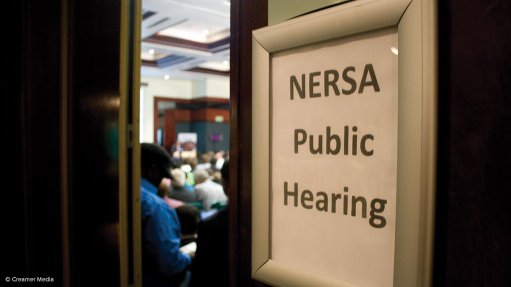Sustainable building designs on the rise
Although it was previously widely thought to be prohibitively expensive to make the upfront capital investments to go green, uncertainty about the availability of power and water resources, as well as cost volatility, for example, is influencing a mindset change, says professional services consultancy firm WSP Africa building service regional director Alison Groves.
Architects, consulting engineers and sustainability consultant teams are constantly coming up with alternative and environmentally suitable building designs to offset the impact of the building on its immediate environment, she adds.
Therefore, in the long term, sustainable building-design adoptions are financially beneficial, owing to their reduced energy consumption, while the use of renewable and more sustainable energy resources can also reduce the carbon emissions associated with these buildings and provide increased resilience for uncertain service delivery, Groves explains.
“These are all significant value-adds for customers and tenants, and they are also having a significant influence on the economic case for developments to be built for sustainability, which can assist in increasing their marketability.”
It is key for investors and developers, as well as their consultants and contractors, to incorporate climate responsiveness and design within concept constraints when developing buildings to ensure that they remain resilient and sustainable in an unpredictable future, she points out.
Further, while the demand for new green buildings continues to grow, it will not replace the importance of the existing building stock, particularly within city centres and urban hubs, says Groves.
Urban hubs, such as Sandton, are economically key, but the vacancy rates for commercial office space in Sandton are 15.9%, much higher than the national average, she adds.
The stock of available office space will, consequently, result in not many new buildings being built in the short to medium-term.
“This presents an even greater opportunity to focus on urban regeneration – through refurbishing and retrofitting the existing building stock – keeping sustainability principles top of mind.”
Further, WSP has noticed three key emerging trends that underpin aspirations of building for sustainability, says Groves.
Responsive developers understand and appreciate that environmentally sustainable design also drives economic value in their portfolios and as long-term investments.
Secondly, building for zero-harm entails designing for environmental sustainability using independent assessment criteria to guide design such as the Green Building Council’s Green Star rating tool and Leadership in Energy and Environmental Design certification.
There are also the future-ready designs, where companies design for resilience and future-purpose reimagining.
Sustainable Interventions
Groves mentions that there are a few green sustainability interventions that owners and/or developers look to target, particularly to obtain certain accreditations for their buildings.
Such interventions may be vast, and vary from building to building, but will certainly, at the very least, include the materials, specifically the recycled and reused contents of the materials, used in new builds and refurbishment projects to reduce the embodied carbon of the development.
She adds that other interventions are improved energy efficiency, especially using natural light, balanced with efficient light fittings and smart switching, as well as improving water consumption with more efficient fittings.
Another intervention is optimising temperature and air flow management by taking into consideration the façade, the placement of people in accordance with the façade and – depending on the scope of the project – driving more efficiencies through the mechanical plant system.
Companies can also consider interventions such as on-site recycling access and waste-to-landfill during the building or refurbishment and operational phases of a building; and operational measures that will guide building managers and occupants to adopt more sustainable processes when managing the day-to-day, adds Groves.
She notes that several industries have adopted these interventions, including the private sector and investors, developers and businesses that own their buildings.
Comments
Press Office
Announcements
What's On
Subscribe to improve your user experience...
Option 1 (equivalent of R125 a month):
Receive a weekly copy of Creamer Media's Engineering News & Mining Weekly magazine
(print copy for those in South Africa and e-magazine for those outside of South Africa)
Receive daily email newsletters
Access to full search results
Access archive of magazine back copies
Access to Projects in Progress
Access to ONE Research Report of your choice in PDF format
Option 2 (equivalent of R375 a month):
All benefits from Option 1
PLUS
Access to Creamer Media's Research Channel Africa for ALL Research Reports, in PDF format, on various industrial and mining sectors
including Electricity; Water; Energy Transition; Hydrogen; Roads, Rail and Ports; Coal; Gold; Platinum; Battery Metals; etc.
Already a subscriber?
Forgotten your password?
Receive weekly copy of Creamer Media's Engineering News & Mining Weekly magazine (print copy for those in South Africa and e-magazine for those outside of South Africa)
➕
Recieve daily email newsletters
➕
Access to full search results
➕
Access archive of magazine back copies
➕
Access to Projects in Progress
➕
Access to ONE Research Report of your choice in PDF format
RESEARCH CHANNEL AFRICA
R4500 (equivalent of R375 a month)
SUBSCRIBEAll benefits from Option 1
➕
Access to Creamer Media's Research Channel Africa for ALL Research Reports on various industrial and mining sectors, in PDF format, including on:
Electricity
➕
Water
➕
Energy Transition
➕
Hydrogen
➕
Roads, Rail and Ports
➕
Coal
➕
Gold
➕
Platinum
➕
Battery Metals
➕
etc.
Receive all benefits from Option 1 or Option 2 delivered to numerous people at your company
➕
Multiple User names and Passwords for simultaneous log-ins
➕
Intranet integration access to all in your organisation


















